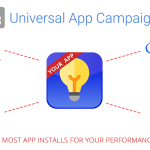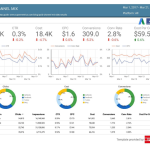Alphabet Is Using Google’s Ad Technology To Take On ISIS
An experimental division of Google parent Alphabet is harnessing Google’s advertising technology to help stop the spread of ISIS.
“ISIS is a terrorist group unlike any that we’ve seen before,” says Yasmin Green, the head of research and development at Jigsaw, an internal tech incubator focusing on international security issues. “They’ve been successful in capturing both physical territory and digital territory.”
The extremist group has reportedly lost physical territory in Iraq and Syria in recent months, but security experts have long warned that its sophisticated media strategy—involving videos, social media, and even glossy print publications—still enables the group to attract supporters from around the world.
“With the widespread horizontal distribution of social media, terrorists can identify vulnerable individuals of all ages in the United States—spot, assess, recruit, and radicalize—either to travel or to conduct a homeland attack,” Federal Bureau of Investigation Director James Comey told Congress last year. “The foreign terrorist now has direct access into the United States like never before.”
Jigsaw, formerly known as Google Ideas, concluded an 8-week pilot program earlier this year, using the same technologies that let commercial advertisers target internet users most likely to be interested in their products to identify users demonstrating sympathies toward ISIS. Then, says Green, online ads pointed them toward content, in both English and Arabic, delivering alternative viewpoints in ways that can actually change their minds.
“They usually made their decision to join [ISIS] based on partial information,” she says of those who’ve joined the terror group in the past. “That’s really the bet we’re making here, is that with better information, individuals will be empowered to make better choices.”
Before launching the test campaign, members of the Jigsaw team did extensive field research, meeting with former ISIS sympathizers and members of targeted communities from Iraq to London, trying to understand everything from how they use mobile phones to what motivated their initial sympathies for the terror group. They then formulated an advertising campaign targeting internet users whose search keywords indicated a potential for radicalization, not just an interest in mainstream news coverage of terrorism or events in the Middle East.
“We were factoring in these types of things: supportive slogans, deferential terms for the Islamic State, preferences for ISIS-produced content,” says Green.
For instance, ISIS sympathizers are more likely to use an Arabic-language slogan meaning “remaining and expanding,” and they’re more likely to use certain terminology for the group itself and political concepts it embraces, like the return of the Islamic political institution known as the caliphate, she says.
A Google advertising tool called the Keyword Planner, which uses Google’s substantial data collections to suggest additional relevant keywords to target for an ad campaign, helped find additional terms to target with ads, she says. And while the company didn’t do any offline tracking of targeted users, so it can’t say how many people may have actually been dissuaded from joining ISIS, it still saw encouraging signs from the pilot.
“Over 8 weeks, in Arabic and English, that this pilot ran, it reached an estimated 320,000 unique individuals, half of which we believed showed signs of positive sentiment toward the Islamic State,” Green says. And, she says, the click-through rate of the ads Jigsaw placed were on average 70% higher than others targeting the same keywords.
But simply placing advertisements is only half the battle: Green and her team also had to decide what kinds of content those ads would promote. They quickly decided to curate existing content online, rather than producing new material, but that still left a lot of choices to be made. And sending users to videos or blog posts that just offer “facile parody” of ISIS, use terminology that’s seen as overly derogatory, or simply come off as overly preachy will just alienate the people Jigsaw is trying to reach, she says.
“It turns out a lot of the content being produced in this space, I liken it to showing smokers their lungs with nicotine [damage] on the side of the cigarette packet,” she says. And even mainstream Western news sources, like the BBC, can be seen as biased by potential ISIS recruits, Green says the team learned through field research.
They decided, instead, to focus on citizen journalism and documentary footage showing the realities of life under ISIS and the struggles the group has been having militarily, along with material highlighting the religious debate around some of the Islamic concepts ISIS cites and testimony from former ISIS supporters who had left the group.
“Those were among the most compelling,” Green says. “These were individuals who had just come back—they were until very recently subscribing to ISIS ideology.”
Ultimately, users targeted by the ads collectively watched about 500,000 minutes of video, she says. And as the project expands, Green hopes to work with external funding organizations and advertising groups to expand to other languages and potentially even enable deradicalization experts to work one-on-one with potential ISIS recruits who are posting on YouTube and social media networks.
The efforts may one day expand to combat other forms of extremism, such as white supremacist movements, she says. Since shortly after it was founded in 2010 as Google Ideas, the group has been in contact with former extremists of a variety of stripes, looking to learn why young people are drawn to such movements.
Jigsaw’s project isn’t the only effort to focus on countering ISIS propaganda: Obama administration officials have met with executives from Hollywood movie studios and social media companies like Snapchat and Facebook to discuss ways to limit and counter the group’s global reach. And while the pilot program arose within Alphabet, a company central to internet advertising, Green says there’s no reason a similar project couldn’t begin elsewhere.
“There’s no really secret sauce here,” she says. “This is really just about setting the target audience as those who already engaged, informing the campaigns with insights from defectors and former members, and getting the insights to design really good campaigns.”
Fast Company , Read Full Story
(12)












